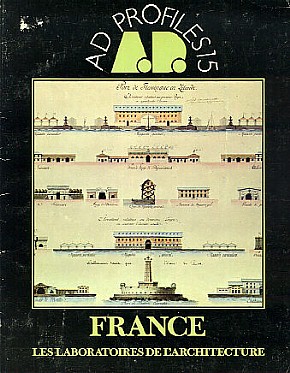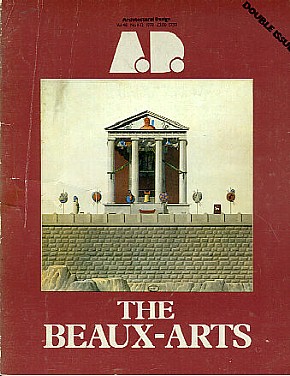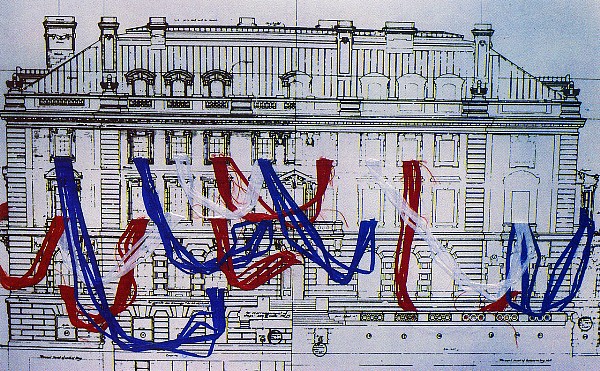
Antoine Grumbach, guest editor, Architectural Design (London: Academy Editions, vol. 48 no. 8/9, 1978).
AD PROFILE 15: FRANCE
The Laboratory of Architecture
Antoine Grumbach:
The Theatre of Memory
Antoine Grumbach:
Dare to Represent
Alain Demangeon and Bruno Fortier:
The Politics of Urban Space: The City Around 1800
Hubert Jeanneau and Dominique Deshouliéres:
A Comparative Analysis of Architectural Competitions in France
François Chaslin:
Research: Making Up for Lost Time
Fernando Montes:
Le Corbusier and the Ecole des Beaux-Arts
Jacques Lucan:
To Build Nevertheless
Paris Map Guide:
An Architectural Guide to Paris and its Environs

Robin Middleton, guest editor, Architectural Design (London: Academy Editions, vol. 48 no. 11/12, 1978).
AD PROFILE 17: THE BEAUX-ARTS
Robin Middleton:
Introduction
Robin Middleton:
19th Century French classicism
Catherine Marmoz:
AD Map Guide to the Beaux-Arts Buildings of Paris
Hélène Lipstadt:
César Daly: a revolutionary Architect?
Denise Scott brown:
Learning the wrong lessons from the Beaux-Arts
Peter Smithson:
Once a jolly swagman
Robin Middleton:
Vive ;'Ecole
Anthony Vidler:
The Writing on the Wall
Alan Colquehoun:
The Beaux-Arts Plan
David Van Zanten:
Le système des Beaux-Arts
Henry Russell Hitchcock:
French Influences on 19th century Architecture
Leon Krier:
Law and Disorder
James Stirling:
Beaux-Arts Reflections
| |
Colin Rowe & Fred Koetter Collage City (1973-78).
Napoleon I entertained the project of turning Paris into a species of museum. The city was, to some degree, to become a sort of habitable exhibition, a collection of permanent reminders which were to edify both the resident and the visitor; and the substance of the instruction, one guesses right away, was to be some kind of historical panorama not only of the greatness and continuity of the French nation but, also, of the comparable (though surely slightly less) contributions of a mostly subservient Europe. . . So, intrinsically one recoils from the idea; but, if it must for the present day command something less than enthusiasm (one is apt to think of Albert Speer and his unfortunate sponsor), one is still with Napoleon's idea, presented with the fantasy of a great emancipator, still provided with the embryonic programme for what, in its day, could be regarded as a genuinely radical gesture. For this is perhaps one of the first appearances of what was to be a recurrent, and maybe not a repressive, nineteenth century theme: the city as museum.
Colin Rowe & Fred Koetter
When the authors of Collage City refer to the "city as museum," the assumption is that they mean the city as a museum of architecture. The city/museum celebrated here advocates an urban design based on the assembly of diverse architectural fragments, a compositional paradigm that relies on a preexisting set of buildings typologies and, furthermore, intentionally combines various architectural styles. Such a city would undoubtedly offer a wide range of "virtual places," metropolitan settings evocative of another place, and perhaps even another time. The citizens would inhabit and move through engrafted "virtual realities," while at the same time being exposed to interpretations and facsimiles of the world's great architecture, thus fortuitously receiving lessons in architectural history along the way.
As it happens, Collage City "collages" all the precedents for a virtual museum of architecture thus far.
seeking precedents... ...finding inspiration
| |

Alison and Peter Smithson, Cooper-Hewitt, Swag Decoration (New York, 1978).
|